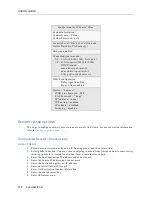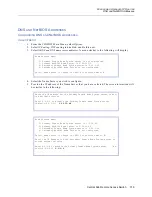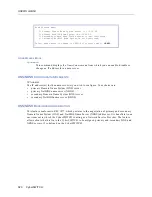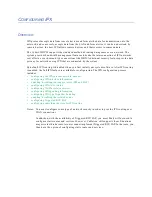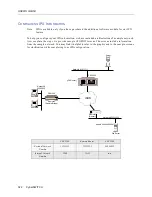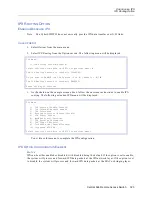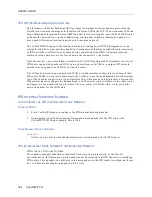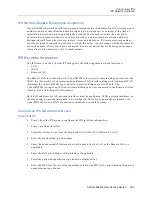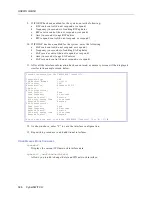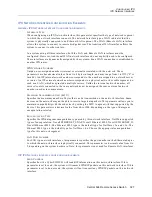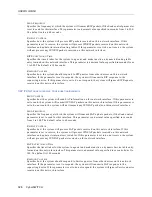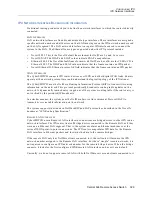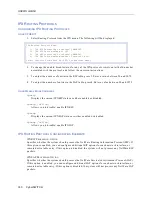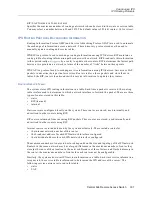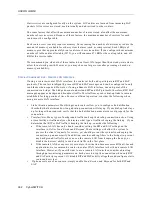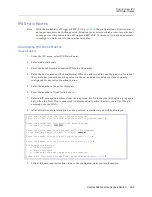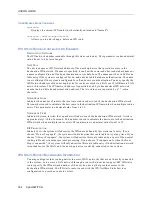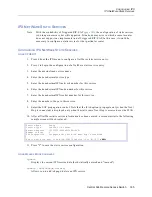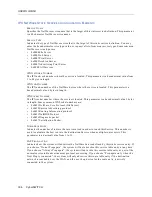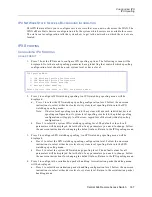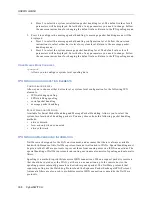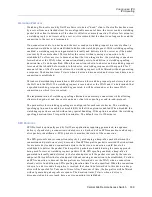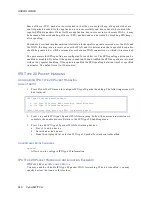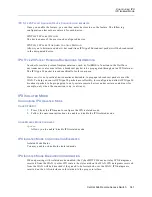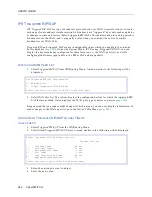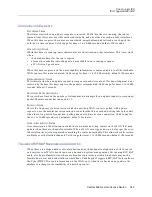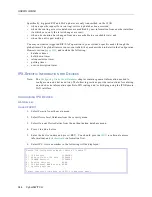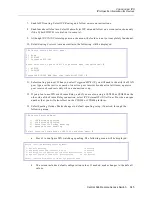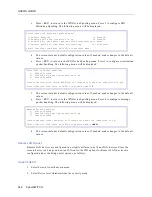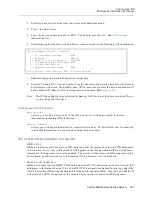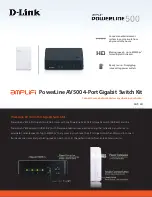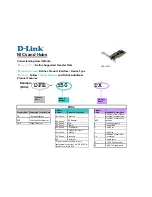
USER’S GUIDE
332 CyberSWITCH
Static services are configured locally on the system. SAP entries are learned from incoming SAP
packets. All services are stored, used internally and advertised to other routers.
The same factors that affect the maximum number of routes stored also affect the maximum
number of services stored. Because of these factors, the maximum number of services for each
router must be configurable.
Each route or service entry requires memory. So increasing the number of entries may reduce the
amount of memory available for other system features (such as compression). Each 1KByte of
memory provides approximately 6 route entries or 4 service entries. If you configure the maximum
number of table entries allowable (3072), you will consume 471 KB for the routing table, and 639
KB for the service table.
We recommend you size both of these tables to be at least 10% larger than their steady-state size to
allow for network growth. However, you may choose a larger or smaller percentage, based on
memory availability.
S
PECIAL
C
ONSIDERATIONS
- R
EMOTE
LAN I
NTERFACE
If using a router-to-router WAN interface, the routers at both ends participate in RIP and SAP
protocols. The routers intelligently process RIP and SAP messages and can be configured to only
send them when required. However, if using a Remote LAN interface, one end-point of the
connection is a bridge. The bridge does not understand RIP and SAP protocols; therefore, RIP/SAP
messages appear as background broadcast traffic. This traffic may cause dial-up links to remain
established for long periods of time. For more efficient operation, consider the following when
using a remote LAN interface:
•
Link utilization parameters. Most bridges and routers allow you to configure link utilization
thresholds that determine how long a dial-up connection will stay up. If your dial-up link stays
up for longer than required, verify that the link utilization parameters are set properly for the
connection.
•
Trace facilities. Many types of background traffic can keep the dial-up connection active. Using
a trace facility or traffic analyzer, determine what type of traffic is keeping the link up. If you
determine that RIP or SAP traffic is keeping the link up, consider the following:
a.
If the remote LAN has only clients, consider setting the RIP and SAP settings on the
interface to Do Not Send, Receive and Respond. These settings will allow the system to
process the clients’ requests for servers, yet should prevent the system from keeping the
connection up unnecessarily. In addition, consider adding filters to the bridge (to prevent
any background traffic from devices on the remote LAN from keeping the line up), or
disable the devices’ ability to send such traffic in the first place.
b.
If the remote LAN has any servers or routers, the situation becomes more difficult. In such
applications, we recommend a router-to-router WAN interface rather than a remote LAN
interface. However, if you still want to use a remote LAN interface, consider adjusting
throughput monitoring parameters on both peers to drop the connection when only RIP
and SAP activity is present. Or, disable RIP and SAP activity altogether and configure static
routes and services.
•
If phone costs are of no concern, simply enable Send, Receive, and Respond for both RIP and
SAP.

